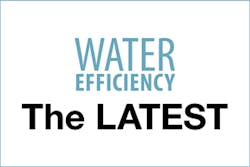California Achieves Major Milestone Toward Sustainable Groundwater Management
In a major step toward sustainable groundwater management in California, more than 99 percent of the state’s high- and medium-priority groundwater basins have met a key deadline to form local Groundwater Sustainability Agencies (GSAs) under the state’s landmark Sustainable Groundwater Management Act (SGMA) of 2014.
SGMA required formation of locally controlled GSAs in the state’s 127 high- and medium-priority groundwater basins by June 30, 2017. As of this week, 99 percent of the basins in that category are now covered by a local GSA, a groundwater adjudication, or an alternative sustainability plan.
“This is a signal accomplishment that required the leadership of myriad Californians who care about the future of their communities,” said Felicia Marcus, chair of the State Water Resources Control Board. “The successful formation of so many GSAs doesn’t by any means mean that this was easy. It was really hard–and it’s a great down payment on the hard work to come as GSAs move into developing their management plans.”
For the remaining basins that did not meet the GSA formation deadline, the State Water Board sent letters to property owners late last week to identify if there are active wells drawing groundwater that must be reported to the state. Portions of basins not covered by a GSA, adjudication, or alternative plan are considered unmanaged areas. Groundwater extractions made from an unmanaged area must be reported to the state. The locations of unmanaged areas can be viewed on the unmanaged area identification map.
“Groundwater accounts for a third of the state’s water supply on average and serves as a critically important source in dry years,” said Department of Water Resources Director Grant Davis. “It’s encouraging to see such a strong commitment from land owners and communities to manage this critical water source now and for future generations.”
The next step for GSAs is to create and implement groundwater sustainability plans that describe needed actions and implementation measures to bring their basins into balanced levels of pumping and recharge in the timeframe outlined in SGMA. SGMA allows GSAs to tailor plans to the economic and environmental needs of the regions, and provides tools and authorities for developing projects and regulating groundwater use to meet the GSA’s sustainability goals.
Basins identified as critically overdrafted are required to have sustainability plans in place by Jan. 31, 2020. All other high- and medium-priority basins have until Jan. 31, 2022, to adopt plans.
The plans will be reviewed by the Department of Water Resources (DWR) and will be continuously updated to ensure sustainable management of the state’s groundwater by the year 2042.
To assist with the development of groundwater sustainability plans, DWR will provide important information and data, technical and non-technical assistance, best practices, guidance publications and grant funding opportunities that may be crucial to a plan’s success. In addition, DWR staff will present sustainability plan workshops for GSAs around the state. The first is scheduled for Sept. 20, 2017 in the Fresno area. Information on all of DWR’s SGMA resources and activities is available at http://www.water.ca.gov/groundwater/sgm/index.cfm
Background on the Sustainable Groundwater Management Act (SGMA) Signed into law by Governor Edmund G. Brown Jr. in 2014, SGMA is landmark legislation that empowers local agencies to sustainably manage groundwater resources. In areas where groundwater users and local agencies are unable or unwilling to sustainably manage their groundwater, SGMA authorizes State Water Board intervention. California depends on groundwater for a major portion of its annual water supply, particularly during times of drought. The long-term planning required by SGMA will provide a buffer against drought and climate change, and will contribute to reliable water supplies regardless of weather patterns in the state.
